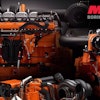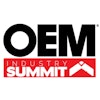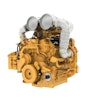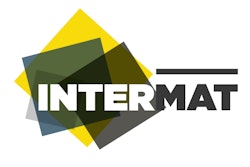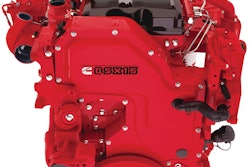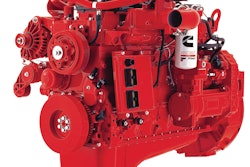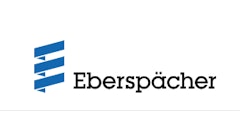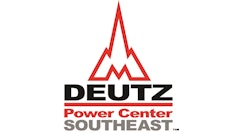In 2011, Volvo Penta used SCR technology to meet the Tier 4 Interim/Stage IIIB emissions standards. When the considerably tougher Tier 4 Final/Stage IV standards are in force in 2014, the same technology will be used. The reason is to keep it simple for the OEMs, meaning no re-generation, limited installation challenges, continuous optimized fuel consumption and low operating costs.
The emissions legislation introduced in North America and Europe in 2011 (Tier 4 Interim/Stage IIIB) forced all engine manufacturers to introduce after-treatment systems to deal with either NOx (nitrogen oxides) or PM (particulate matter). This, in turn, has put enormous demands on OEMs who need to re-design their machines to install the new engines and after-treatment systems.
Volvo Penta’s approach – keep it simple
Within a three-year period, 2011-2014, the industry must go from Tier 4 Interim/Stage IIIB to Tier 4 Final/Stage IV. This step changes the Nox from 2.0 g/kWh to 0.4 g/kWh, an 80% reduction. This will result in further changes to the engine and after-treatment systems on diesel engines that are to comply with the new regulations.
Volvo Penta’s strategy is to keep these changes as simple as possible. In January 2011, Volvo Penta introduced an engine range compliant with Tier 4 Interim/Stage IIIB based on SCR technology (Selective Catalytic Reduction). This range featured optimized fuel consumption, identical cooling-package size and no need for re-generation. In 2014, Volvo Penta will achieve the same objectives again, meaning limited installation challenges for OEMs and low operating costs.
Engine range evolution
The new, evolved Volvo Penta engines for off-road applications will be ready for delivery to OEMs in 2014, but already at the INTERMAT exhibition in Paris, in April 2012, they will be on display.
The range consists of five newly developed basic engines, whereof two are completely new designs, all manufactured by Volvo, for Volvo. One particular detail is the common design concept, meaning that the different parts of the engines are identically located on the engine body. This component commonality is valuable in many aspects, particularly for OEMs who include several engine sizes in their product applications.
The new engine designs are based on today’s SCR engines. Thanks to the construction of the SCR system, it has been possible to meet the Tier 4 Final/Stage IV emissions standards with a limited number of technical changes.
The following five Volvo Penta diesel engines will be ready for the OEMs' drawing boards in 2012 and ready for delivery in 2014:
5 liters
The TAD57XVE, a four-cylinder, 105 to 160 kW engine with a max torque of 900 Nm.
8 liters
The TAD87XVE, a six-cylinder, 160 to 235 kW engine with a max torque of 1,300 Nm.
11 liters
The TAD117XVE, a six-cylinder, 235 to 295 kW engine with a max torque of 1,950 Nm.
13 liters
The TAD137XVE, a six-cylinder, 295 to 405 kW engine with a max torque of 2,650 Nm.
16 liters
The TAD167XVE, a six-cylinder, 405 to 500 kW engine with a max torque of 3,200 Nm.
For meeting the 2014 Tier 4 Final/Stage IV emissions standards, Volvo Penta will also introduce a powerful bi-fuel engine. Fueled by a precision blend of natural gas and diesel fuel, the engine is primarily targeted for applications in oil and gas exploration markets:
16 liters
The TWG1663GE, a six-cylinder, 60 Hz/1,800 rpm (with fan) engine. Prime power: 595 kWm/559 kWe/699 kVa. Standby: 654 kWm/615 kWe/768 kVa. Generator efficiency: 94%.
All engine data is preliminary.
Intermat 2012
As mentioned above, these engines will be further presented at the INERMAT exhibition in Paris, in April 2012. OEMs and operators are welcome to view and discuss the engines that will be on display.
